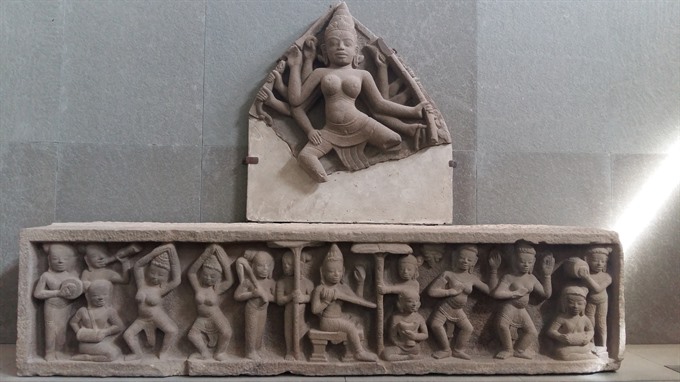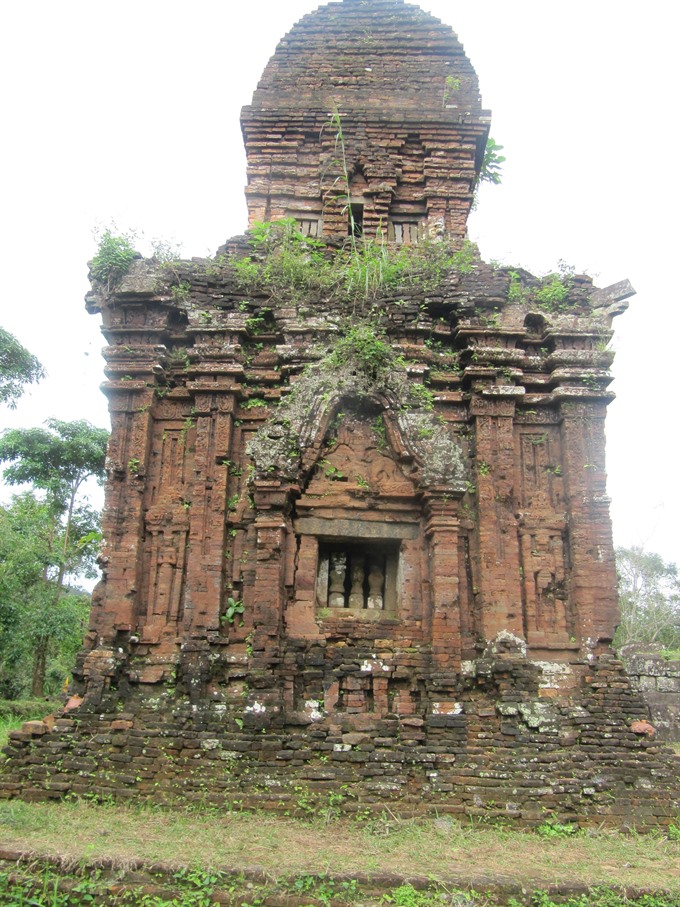 Life & Style
Life & Style

As Việt
 |
| A sculpture from the Đồng Dương Ancient Buddhism Tower in Quảng Nam. — VNS Photo Công Thành |
ĐÀ NẴNG — As Việt Nam and Indian developed ties in the third century, Buddhist monks played a major role in cementing the relationship.
That was the conclusion of many speakers at a seminar in Đà Nẵng yesterday titled "The Joint Civilisational Heritage of Việt Nam and India". The event was held as part of the activities celebrating several important anniversaries in the Việt Nam-India relationship, said Parvathaneni Harish, ambassador of India to Việt Nam.
This year is the 45th anniversary of the establishment of diplomatic relations between India and Việt Nam, the 10th anniversary of the Strategic Partnership between India and Việt Nam, and the 25th anniversary of the establishment of the India-ASEAN dialogue partnership.
Most Venerable Thích Đức Thiện, secretary general of the Việt Nam National Council Buddhist Sangha, gave a detailed explanation of Indian Buddhist monks’ influence in central Việt Nam.
He said Indian monks followed merchants on trading ships to dock along coastal areas in Việt Nam from the third century as Việt Nam developed sea navigation. These monks came to pray to protect the trading ships from risks in the sea, and they carried Buddhism into the country.
“There are still many vestiges of the founding of the Buddhist religion along coastal areas of Việt Nam,” Most Venerable Thích Đức Thiện said. “Two pagodas – the Phật Tích Pagoda and the Dâu Pagoda in the northern province of Bắc Ninh – remain vestiges of the biggest Buddhism centre in Việt Nam.”
“The Phật Tích Pagoda was the site where Indian monks began missionary work,” he said.
Ambassador Harish noted that the partnership between Việt Nam and India has only grown stronger since Indian monks first arrived hundreds of years ago. And research on cultural links has bolstered that partnership. Scholars have shown that cultural exchange originating long ago persists into the present.
“This shared heritage is not only reflected in the monuments and sculpture of Buddhism and Hinduism from ancient Champa, but is also preserved in the daily life of the Chăm people today, in particular their beliefs and their scripts,” he added.
He said the seminar is focused on presenting research about the historic cultural links between India and Việt Nam; preserving the artifacts and remnants of this heritage; and increasing awareness of the need for the preservation and promotion of this shared civilisational heritage in the future.
He said a group of Indian and Vietnamese archaeologists are currently collaborating on an excavation in the Mỹ Sơn Sanctuary in Quảng Nam Province. The joint excavation discovered an ancient road underground and some artifacts at Mỹ Sơn in April.
The archaeologists also discovered other valuable vestiges of the past, including two stone statues with a human body and a lion’s head and terracotta artifacts buried at the foot of the ancient towers. These artifacts may date back to the 11th or 12th century.
Võ Văn Thắng, director of the Đà Nẵng Museum of Chăm Sculpture and chairman of the Việt Nam-India Friendship Association of Đà Nẵng city, said Indian culture had influenced in Việt Nam’s culture nearly 1,000 years ago via sea trading routes.
“Similar architecture, vestiges in pagodas, and artifacts found in Chăm towers in central Việt Nam show the links with India,” Thắng said.
Former Director General of the Archeological Survey of India, Dr Tewari said the Indian cultural influence may be seen in the towers with boat-shaped roofs.
Dr Tanveer Nasreen argues that these sculptural artifacts reflect the principles of art codified by ancient Indian texts. Nasreen said that the similarities found between Champa and Indian sculptures are the result of cultural contact on a significant intellectual level, not just superficial adaptations.— VNS
 |
| A statue displayed at the Đà Nẵng Museum of Chăm Sculpture. The museum has a full collection of Chăm artefacts that show links with Indian culture. — VNS Photo Công Thành |
 |
| A tower in the Mỹ Sơn Sanctuary bears architectural similarities to temples in India. — VNS Photo Công Thành |




